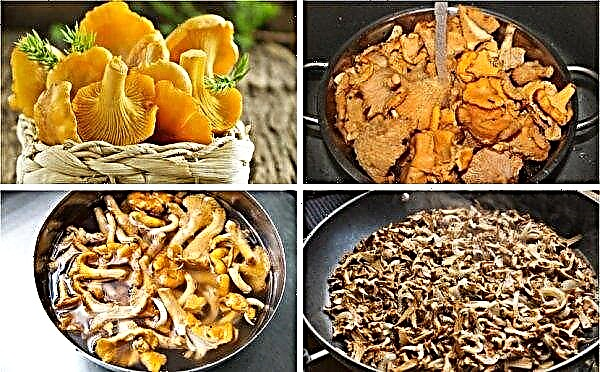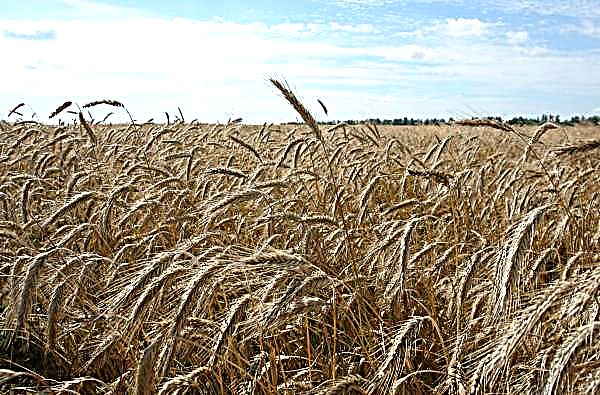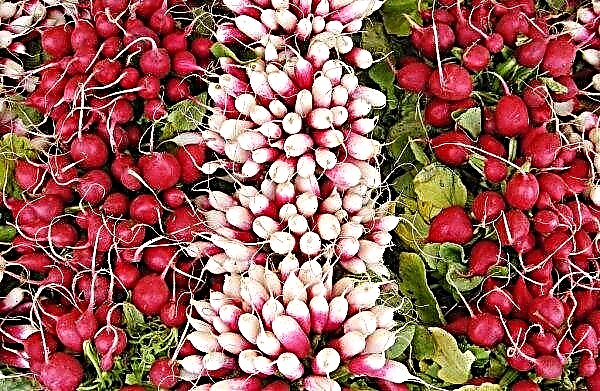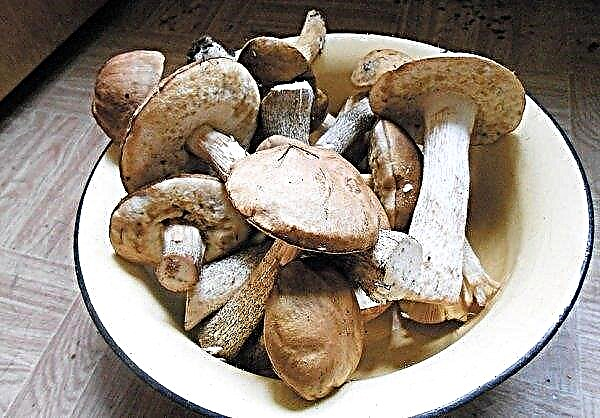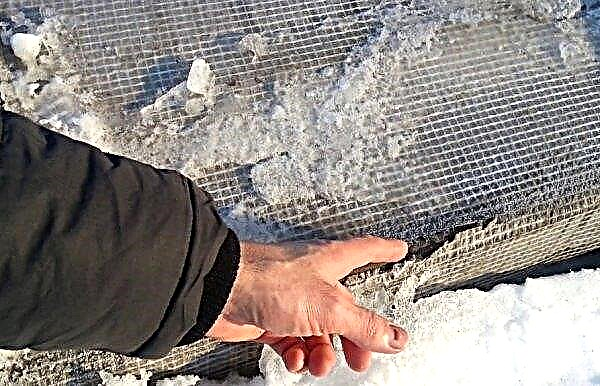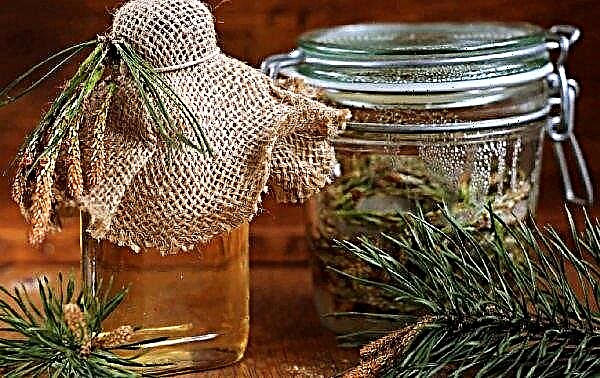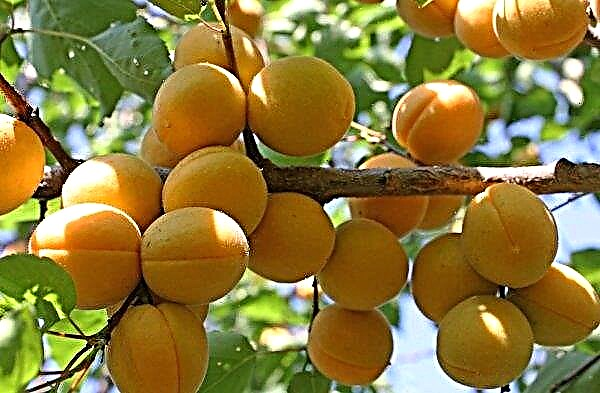The beautiful hyacinth flower is very fond of moisture, but, nevertheless, is able to survive a short drought. The lack of water compensates for the bulb, which resembles a large kidney. With proper preservation of the bulb, hyacinth will delight large and fragrant flowers from year to year. And it is about its safety in the winter that will be discussed in this article.
How to store hyacinths at home
A tuber can only be successfully maintained subject to strict rules. The plant has its own rhythm of life, so the gardener should definitely get acquainted with it before growing hyacinths.
When the flower completely fades, a faded inflorescence is cut from the bulb. After this, you need to continue to water the plant for some time. This period usually lasts until the last leaves are dry.Did you know? Translated from ancient Greek, the word "hyacinth" (hyakinf) means "rain flower". Its flowering coincided with the beginning of the spring rainy season.
Hyacinth bulbs until spring
After the leaves have dried, watering is stopped, and the bulb is dug out of the ground and prepared for further storage. For this, a dark and cool place is chosen. Tubers will stay here until spring.

After flowering
Removing the arrow of the flower is carried out at the moment when it is completely dry. Sometimes gardeners decide to leave it, but this attitude to the storage process is incorrect, because hyacinth will spend on it useful substances, which will negatively affect the condition of the bulb. The arrow is removed until the seed box is formed. It can also loosen the tuber until it is stored.
Important! Before you send the onion to the container for storage, it should be well dried. Residual moisture on the surface of the flakes can cause tuber to fester.
In some studies of Dutch scientists there is information that it is necessary to remove even the arrow on which the flower is formed. This rule applies only to plants of the first and second years of life, since the larger the bulb, the more beautiful and larger the inflorescence will be in the new season.
One of the main rules is the transplantation of a tuber to a new place every three years. Even in warm regions of the country, such a process can prevent the rapid aging of the bulb. In addition, during this time, several new children are formed on the root system. They can be planted in a new place.

In the studies of the same Dutch, information is indicated on the need to dig up the bulb. As soon as flowering ends, even the first-year plant is transplanted. Compliance with this rule is especially important when growing whimsical varieties. It is believed that after wintering they can bloom less beautifully, so these bulbs are initially dug up, visually inspected for damage and disease, sorted and sent for storage.
If the tubers were purchased or already dug up, the first thing they are recommended to dry. After that, they remove the remnants of the earth and dead scales. This procedure should be carried out very carefully, since it is under the layers of the bulb that new children can hide and form.
Rest period
It is impossible to maintain high-quality planting material without a rest period. This is a special time when the tuber is left with almost no care. Only by qualitatively completing the storage process in the winter season, it is possible to ensure the full development of the flower in the next season.
 The duration of the flowering period depends primarily on the variety of hyacinth.
The duration of the flowering period depends primarily on the variety of hyacinth.
We must not forget about the weather conditions: if the climate is moderately warm and humid, the bulb will continue to grow in size even in summer during flowering. This means that the color duration of the plant increases significantly. And as soon as the buds cease to form and the last petals fall, a new period of development begins. It is called rest time. The more correctly this stage passes, the better the flower will be next year. Therefore, it is very important to become familiar with how to store the root system in winter.
Temperature mode
Spring is the period when the revival of nature begins, which has suspended its development in the cold season. It is believed that the hyacinth bulb during this time manages to relax and restore strength. This will lead to the formation of large inflorescences in the future.
In order to properly prepare the plant for future spring planting, it must be properly maintained. A cool place is chosen for this house. After this, the temperature should gradually decrease. Such a process will provide preliminary preparation for the transition of hyacinth to the resting period. In this regard, it is necessary to think in advance about choosing a suitable place from where the tubers can be obtained in the spring.

In the selected room or household appliances, a humid atmosphere should be constantly maintained. At the same time, continuous air circulation should be ensured. Some gardeners plant the plant tubers in the ground in August, and in this form they wait for the sowing period. In this case, a gradual decrease in air temperature does the job of creating storage conditions for the gardener. Some craftsmen can even calculate the flowering time for the rest period with an accuracy of several days. One of the options for storing and observing the temperature regime is the choice of a refrigerator as a storage place for tubers.
Important! Hyacinth bulbs contain a rather large amount of oxalic acid, therefore, when working with them, it is necessary to wear protective gloves to avoid damage to the skin.
To comply with a special temperature regime, you should familiarize yourself with three important steps, namely:
- The first 8-9 weeks after digging the bulbs they are stored at a temperature of + 20 ° C. It is believed that such an indicator is ideally suited for the tuber flakes to dry well. In some cases, a temperature increase of up to + 30 ° C is allowed, which will significantly save the drying process. It is only necessary to shift the tubers with sphagnum. This way you can avoid drying out and maintain an acceptable level of humidity.
- The next 4 weeks, it is necessary to gradually lower the temperature to + 18 ° C. It is important to carefully monitor the preservation of the humidity parameter. To ensure its increase will help moisturizing with warm water not only the bulb itself, but also sphagnum.
- The last week of storage implies a decrease in temperature to + 10 ° C. In this case, a sharp decrease in the temperature indicator should be avoided, since the tuber can get additional stress. This will negatively affect the future flowering and growth of the plant in the spring and summer. This stage can be excluded only for residents of the southern regions with a warm climate, because it has been introduced and is being carried out in order to increase the frost resistance of the plant.
Video: storage of hyacinth bulbs
How can bulbs be stored in the refrigerator
Sometimes it is problematic for a gardener to choose a place to store hyacinth bulbs. Not every person has a cellar available, and it can be very hot in an apartment in winter, so the question of the possibility of storing plant tubers in the refrigerator is considered logical.
Gardeners use the lower shelf for this. It should be understood that not every refrigerator is suitable for this process. For example, modern models with No frost technology cannot be used - their feature is the extraction of excess moisture from the chamber, which is unacceptable in the case of hyacinth.

However, if there is no other way, then you can use a modern refrigerator - for this, the bulbs of the plant must be wrapped in moss. An alternative is to lay peat as the top layer in a container with tubers. In this case, it is necessary to spray the surface with warm water daily. But this option is still a backup, which means that it can be used only as a last resort.
Did you know? White hyacinth is a symbol of purity and openness, yellow - jealousy, and blue - reconciliation.
So, the main condition for successful preservation is compliance with the temperature regime. Lack of proper attention to this process often leads to the death of tubers. We should not forget that tubers must be dug up before the onset of winter - if this is not done, then the plant will bloom worse in the new season. Also, do not keep the root system open, as it can dry out. Only adhering to the rules proposed above, next year you can see really beautiful and large inflorescences.

